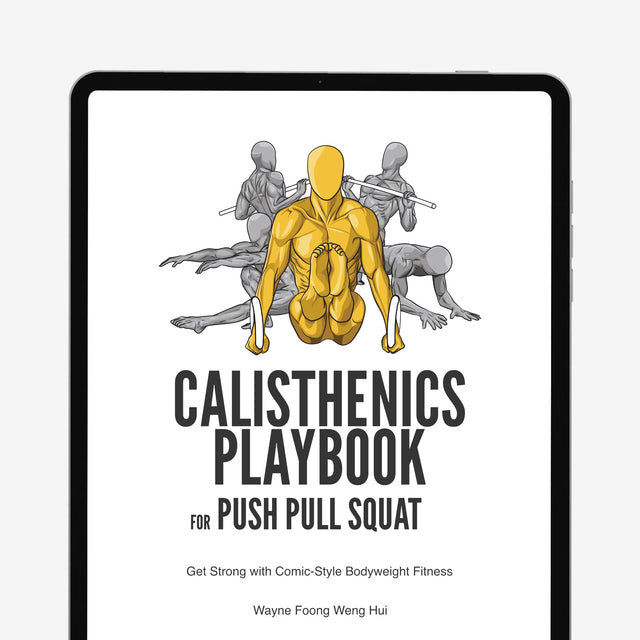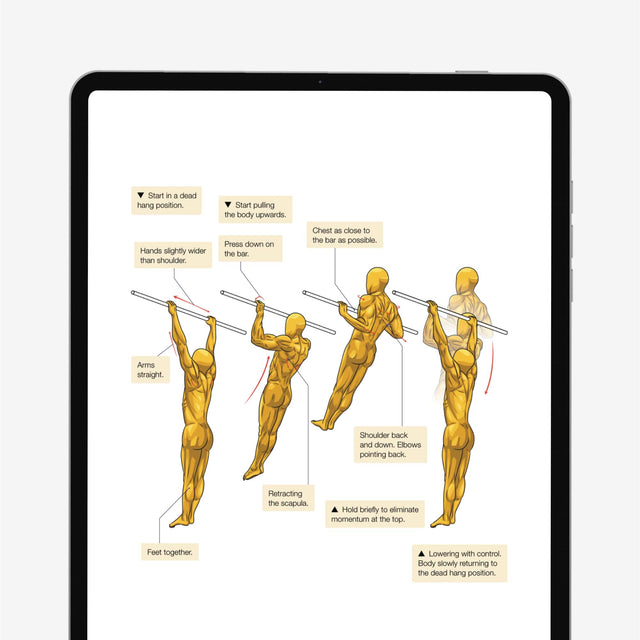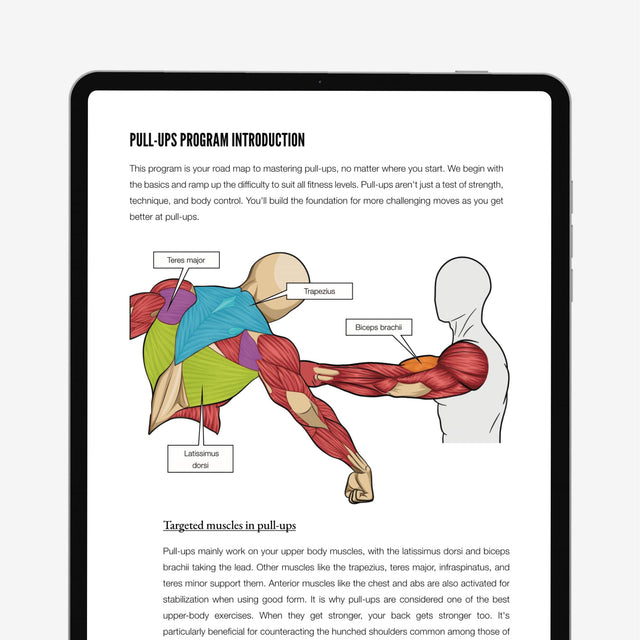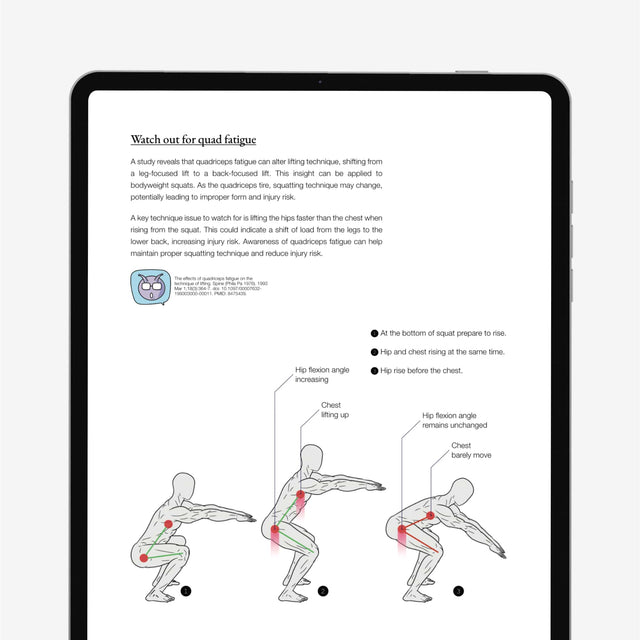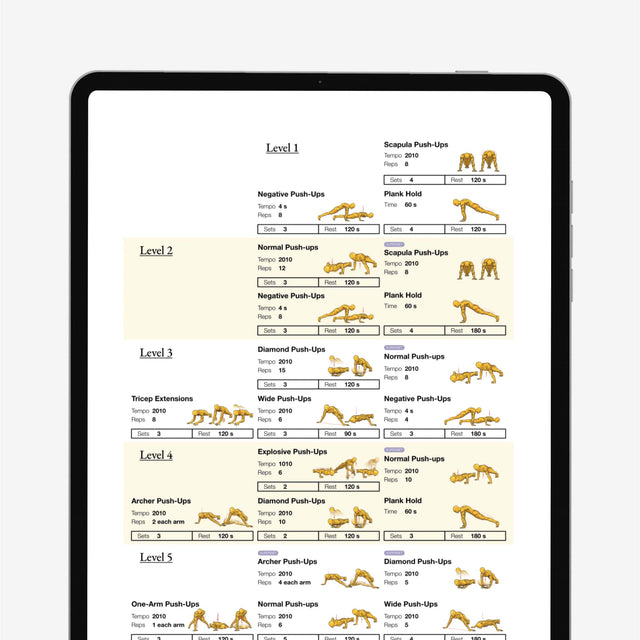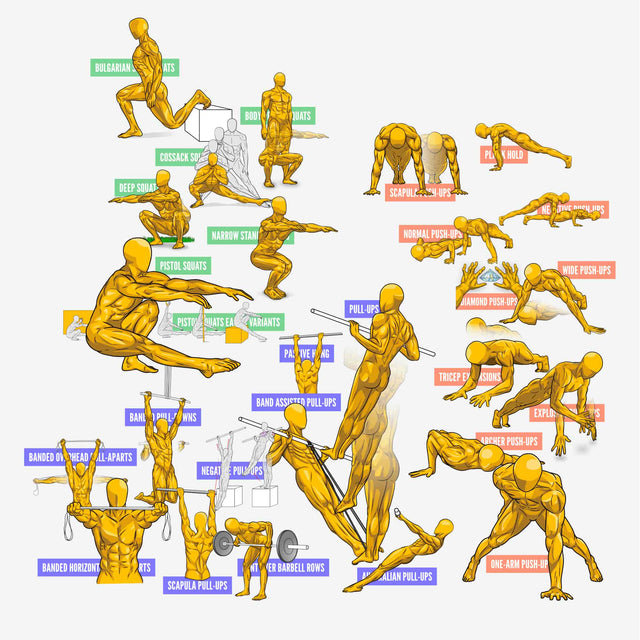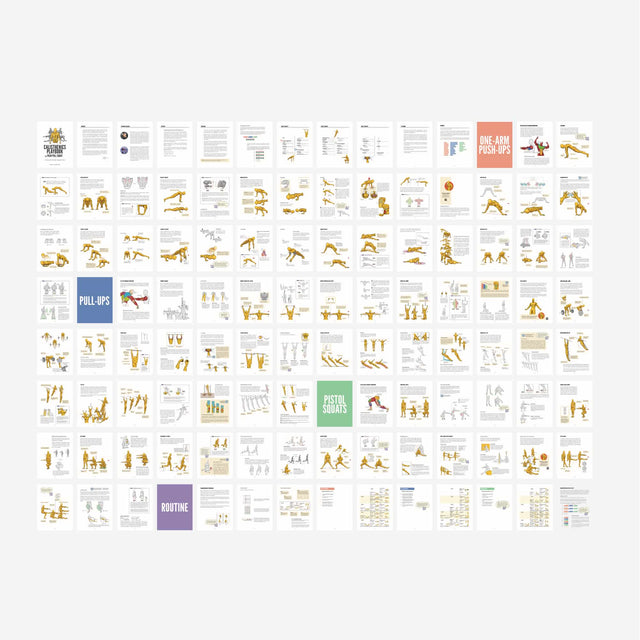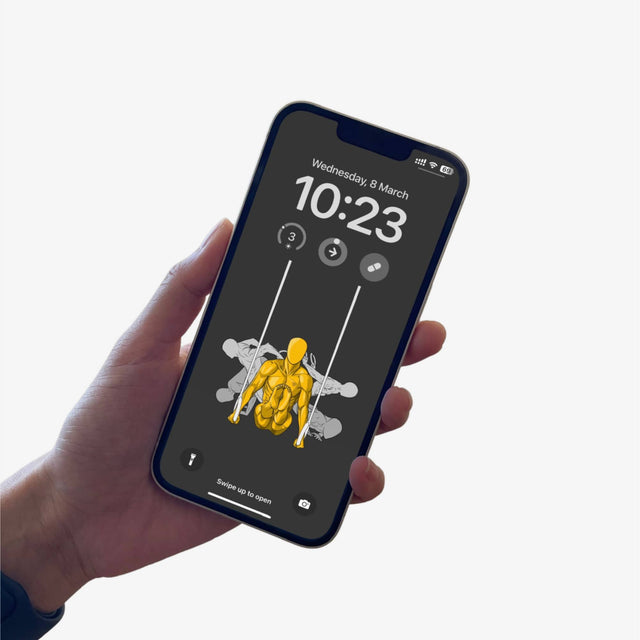8 Things You Should Know When You Started Calisthenics
If you're just starting calisthenics and even if you're not, you're going to make major gains with these practical tips.
They are:
- Back to the basics
- Improve grip strength
- Do more negative rep
- Track your nutrition
- Breathe with techniques
- Know the progression chart
- Learn the anatomy
- Set a goal and be consistent
Back to the basics
It is important to have a solid foundation of skill.
Push up, pull up, and squats are the most fundamental bodyweight exercises. It's great to be able to do at least 25 reps per set, but even better, 50.
High repetitions in the basics will help you master that fundamental movement.

If you can, for example, do 100 repetitions in a row. This is a good indicator of your pushing strength. If you can do 100 pull ups in a row, you’ve mastered your pulling game.
Weighted push up is awesome, but don't do them when you can merely do 10 basic push up. Be patient and keep maxing out the repetition.
You are thereby establishing a strong foundation for your technique.
For example, are you struggle with free handstands? Maximize the "handstand against a wall" time.
Don’t only hold for 60 seconds. Push it to 2 minutes, 3 minutes, or 5 minutes. Increase the volume of your workout by performing them several times in a single day or week.
Make sure you practice the basics enough repetitions that the exercises aren't challenging to you anymore. You are now ready to learn more advanced skills.
Improve grip strength
In most exercises, your grip is part of the contact points. Thinks static bars, the floor, or dumbbells.
A strong grip will automatically increase your endurance. You can increase the number of repetitions you can do and your overall strength.

You probably experience this: In a pull up exercise, your grip is exhausted first before your back and arm do. That’s the sign of weak grip strength. Here is a simple test to see how strong is your grip strength:
- Hold onto the bar (or gymnastic rings) with both hands
- Keep the whole body straight and steady.
- Count how many seconds you can hold on to it.
If you can last at least 1 minute, you have a strong grip.
Take note, your hand should be above the bar when gripping it, not below.

If dead hang with both hands become easy for you, try to do the hold with just one arm.
Imagine how much strength you'll have from being unable to hold on to two arms to be able to comfortably hang on to one arm. This strength will transfer to many other bodyweight skills.
Wrist wraps can boost grip strength in no time. Use them in your heavier workout to perform better and prevent hyperextension.
Do more negative rep
In another word, do the eccentric part of the harder exercise only.
This is the only legit way to hack your progression before you get the true capacity. That's why you should incorporate negative exercises right from the start.
Doing enough negative will eventually earn you the positive of a workout. A lot of negative muscle-ups will eventually unlock a full muscle up.

The goal is to slow down your negative movement as much as possible.
Another great example is the front level. Start at the top and work your way down. Doing that with enough volume, you will be able to get it slower and slower. Keep that same form when you're coming down.
You'll eventually be able to come down slowly with more control, and then you'll be in a position to hold the front lever.
Another great thing about negative rep is, it costs a lower energy consumption than conventional concentric training (4-5 times less energy). So it won’t overload your muscles and risk injury.
Track your nutrition
A balanced diet and awareness of macronutrients is key to growth.
It is a huge mistake to not track macros. You need to calculate the exact amount of calories and protein you consume.
It took a lot of trial and error to figure out what you needed. Or you can approach a professional nutritionist.

Once you figure it out, increase your protein intake to build muscle mass. You’ll gain more muscle mass faster and get more shredded sooner.
People often think they eat enough to grow larger. They may be eating too many of the wrong things, or too much of one item and not enough of the other.
According to your goal, you should keep track of nutrition so you can find out:
- How much protein you are consuming
- Are you in a caloric surplus
You can achieve results by being aware of your macronutrients and eating a balanced diet. This will help you build muscle, lose weight, and become leaner.
Keep in mind that you are already working hard. You want to ensure you cover all aspects of the sport to achieve the best results.
Breathe with techniques
It's also important to know how to breathe properly when you work out. That can make a big difference in increasing your reps and make you lift harder when you train.
Many people who have trained for years don't understand the importance of proper breathing. Not only you will breathe faster but you may also find yourself out of breath and unable to deliver your power or strength.
For example, in a weighted push up, if you exhale all your air at the bottom, it may be difficult to get back up. You'll be able to produce more power if you exhale on the way up.
Breathe in through your nose to fill up your diaphragm, not the chest. You will then exhale via your mouth and empty your diaphragm.

You can also try this: Just place your hand on the stomach and breathe in through your nose, your stomach should bloat up, instead of your chest.
A proper breathing technique is going to increase oxygen in your body which is necessary for your brain and muscles while you are working out.
This helps to:
- regulate your heartbeat
- train for longer
- increase repetitions
- more strength and muscle
Even if you feel out of breath or your breathing is erratic, you can still try to regulate your breathing. You'll soon be able to regain your control and get back into the game.
For something light with more repetitions, like the bench press and push ups. Take a deep inhale at the beginning of repetitions and then, exhale multiple times in a little spurt of on the other half of repetitions.
Good breathing regulation increases your power, strength, endurance, and overall fitness.
Know the progression chart
Two things in advancing in calisthenics:
- Knowing how to progress
- Knowing when to progress
Knowing how to progress
You will be able to move faster if you know the right steps to your target skills.
When we first begin working out, many of the more challenging exercises are intimidating. The one-arm pull-up, full planche, and even the muscle-up are all examples of difficult exercises.
This is a common misconception.
You can follow this great bodyweight progression chart, which originated from this Reddit post.

Knowing exactly which progressions you need to follow in the right order is crucial. So you can complete these exercises faster and encountered far fewer bottlenecks.
Knowing when to progress
Moving on to the next progression as soon as you are ready is better than staying stuck on one.
Many people become stuck on a progression, such as a handstand push up against the wall, without attempting to try the harder progression.
You don't need to wait for signs to let you know when it is time to move on. Do this instead:
- Once you can perform 20 reps dynamic workout in a row, or you can hit the 60s of static hold exercise. You are probably ready to move up the progression.
- Try to perform the next progression skill on weekly basis, with the freshest body and mental.
Never be content with your current training program. Drive the progression and always move on to harder and heavier lifts.
Learn the anatomy
Understanding the anatomy of the muscles and the human body will allow you to know how they interact with one another.
It is crucial to see the big picture and train your body to its best potential.
You don’t have to get a doctorate on this human anatomy, A basic understanding can go a long way.

You will be better able to plan a training program, understand your physical weakness, even treat simple injuries.
Without a good understanding of anatomy and physiology, you could be thinking you have big arms by just doing dumbbell curls (doesn’t work that way).
Set a goal and be consistent
You can't achieve a goal if you don't set a goal. And you can’t be consistent without a goal.
In calisthenics, these are the general goals:
- Unlock certain skills or moves
- Build awesome physiques
- Be more flexible and mobile
- Lose fat, build muscles
- Stay active and keep fit
Whatever it is, write it down and remind yourself why you get started. Don’t pick too many goals at a time or you will struggle to see results.
Here is a little tip to keep up the consistency: Set milestones for your goal.
Break down your goal into many small, realistic milestones, which allow you to hit consistently. Human beings love to be rewarded. Small successes motivate us to do more.

Here’s an example, say your target is to achieve a free handstand. First set your milestone to handstand against the wall for 20 seconds. Work hard at it for a week, and check the result. You’ll likely hit the milestone it is so actionable and achievable.
Wrap up
These concepts are not only useful for beginner who just starting bodyweight exercises. Intermediate and advanced folks will find them practical and useful too.
We've also shared actionable tips for effective calisthenics workout.
Let us know if you found them useful.

